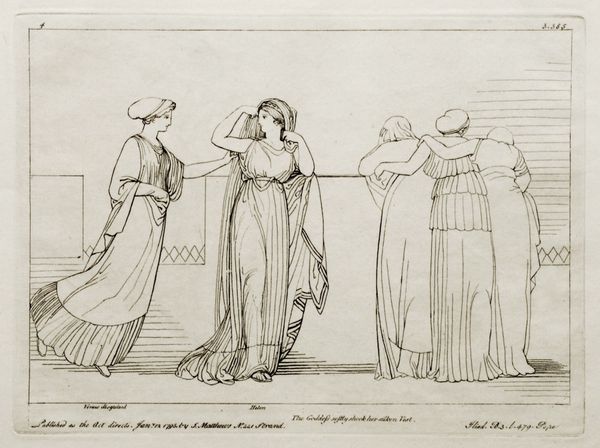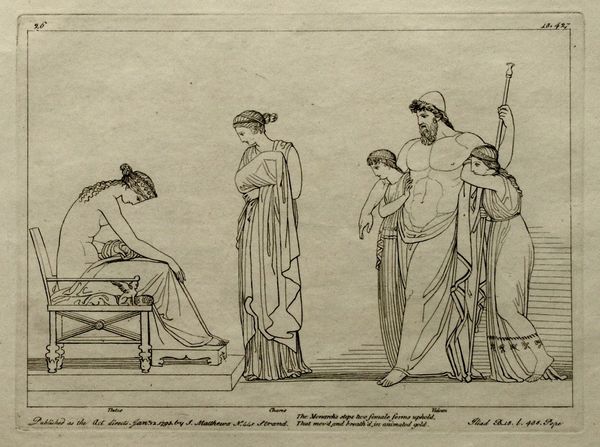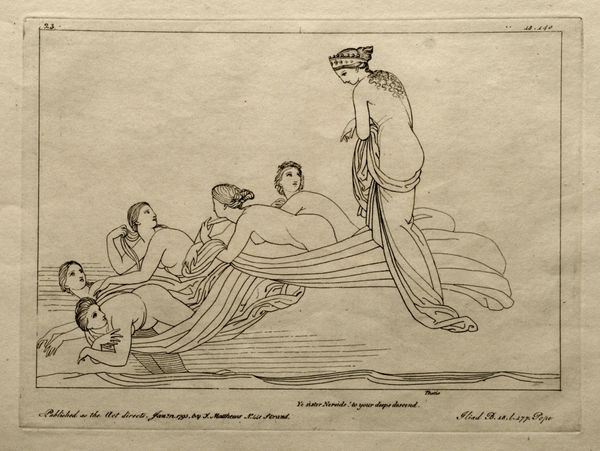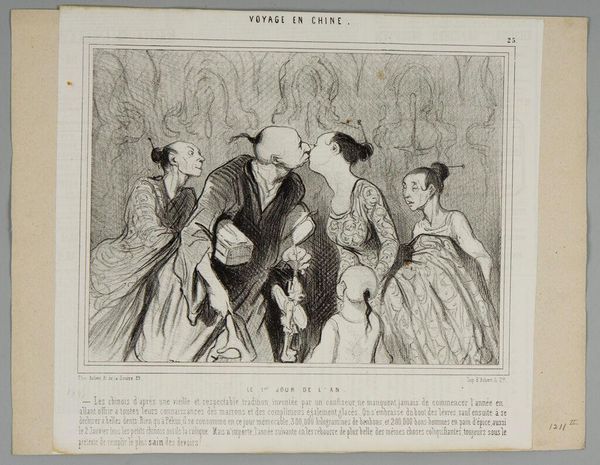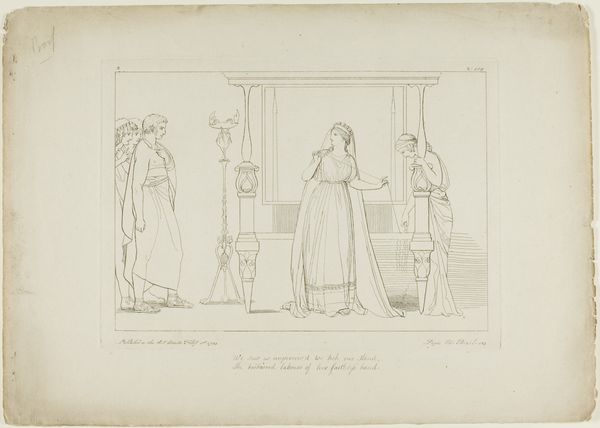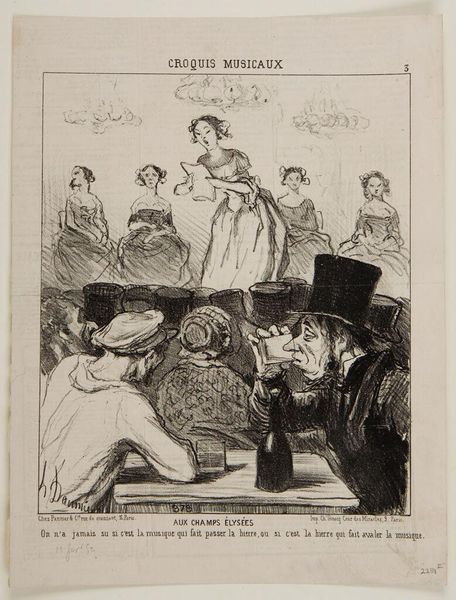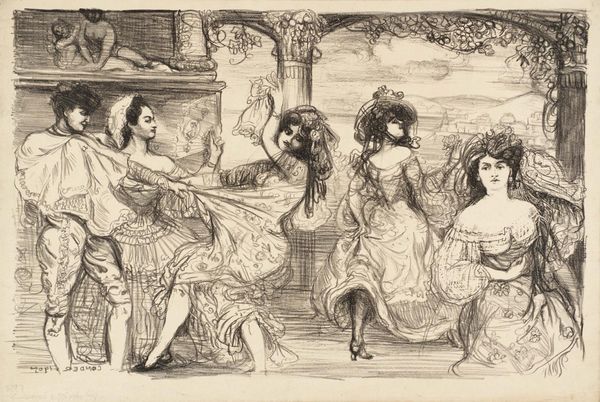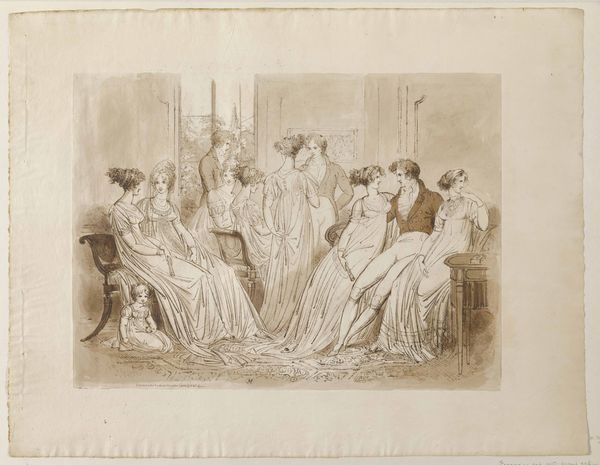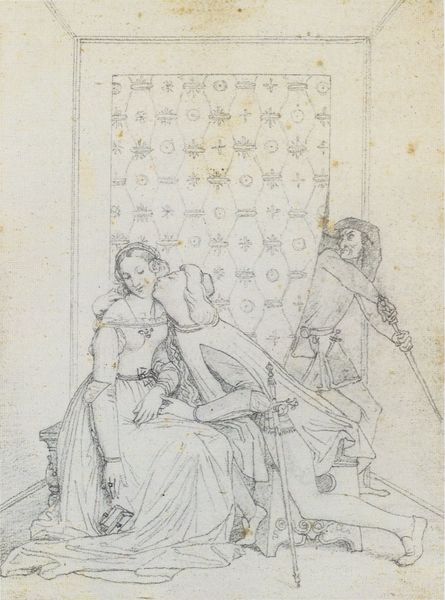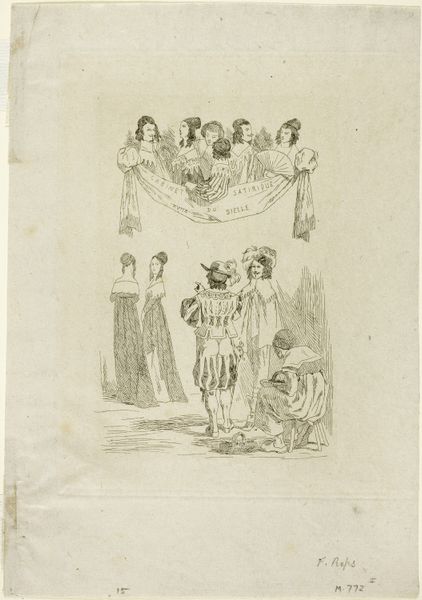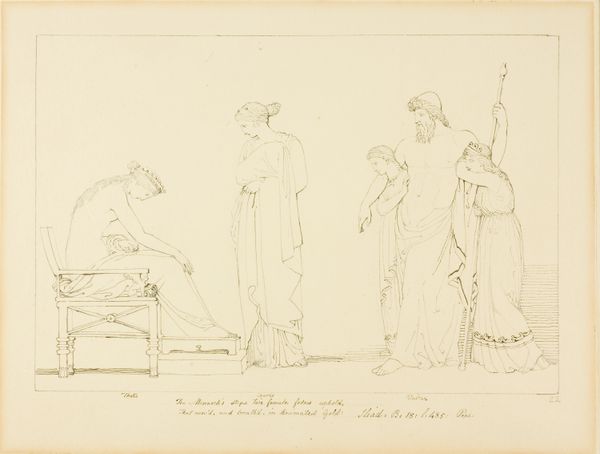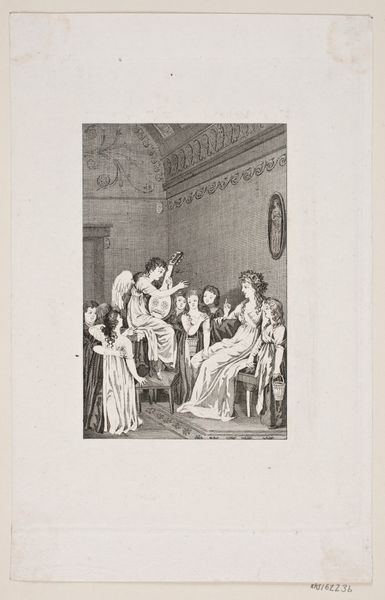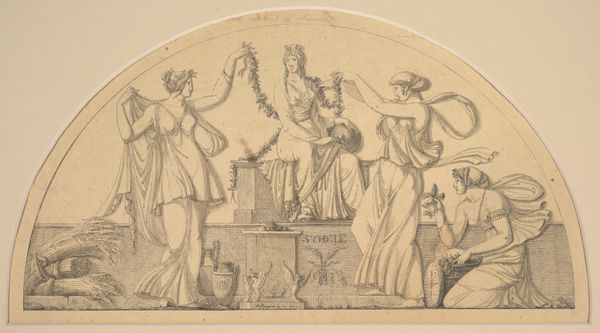
print, etching
#
neoclacissism
#
narrative-art
# print
#
etching
#
greek-and-roman-art
#
classical-realism
#
figuration
#
line
#
history-painting
Copyright: Public domain
Editor: This etching is John Flaxman's "Illustration to the Iliad," created in 1795. The figures, rendered in such stark lines, create a solemn, almost tragic atmosphere. How do you interpret this work, especially considering the historical context of Flaxman's time? Curator: This piece, with its Neoclassical lines and focus on a scene from Homer, is steeped in the political and social upheavals of the late 18th century. Think about the French Revolution raging just across the Channel. Flaxman and his contemporaries turned to classical antiquity, seeking a sense of order and moral clarity amid chaos. How might this image of grieving women resonate with the anxieties and uncertainties of the revolutionary era? Editor: So, the return to classical themes wasn't just an aesthetic choice but also a reflection of contemporary concerns? Curator: Precisely. The starkness of the lines and the emphasis on idealized forms could be seen as a rejection of the perceived excesses of the aristocracy, and a call for a return to republican virtue, to civic duty, and to the austere morality they associated with the ancient world. Who gets to decide which stories are told and how they are visually represented becomes a question of power. What stories do you think this image prioritizes and perhaps silences? Editor: That's fascinating. It gives the work a whole new dimension. I was just looking at the surface of the illustration itself and didn't consider all the undercurrents. Curator: Art is rarely created in a vacuum. It always engages with, and is shaped by, the political, social, and cultural forces of its time. Paying attention to those forces allows us to understand artworks as active participants in broader conversations about identity, power, and justice. What do you think, now that you understand the undercurrents? Editor: It definitely emphasizes the importance of looking beyond the image itself and considering the wider context in which it was created. I appreciate learning the image speaks about anxieties that it could express and conceal. Thanks. Curator: Absolutely, the most rewarding aspect is to understand our history through imagery that expresses, even mutely, our shared cultural awareness.
Comments
No comments
Be the first to comment and join the conversation on the ultimate creative platform.
